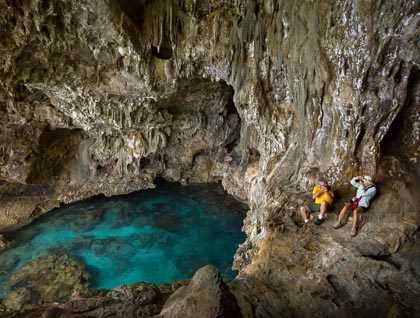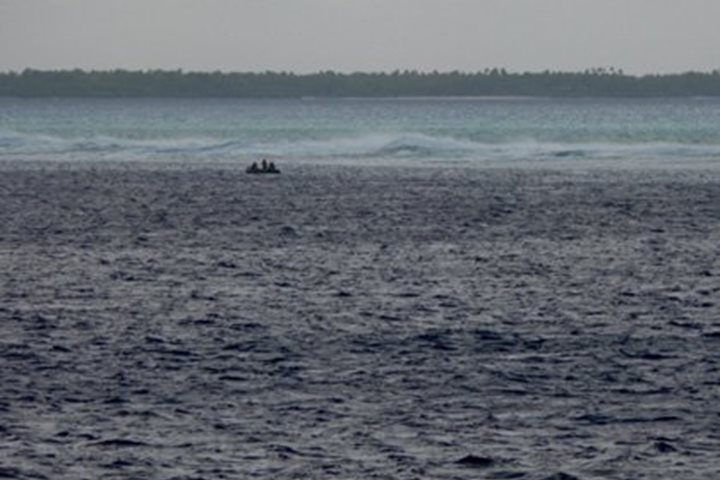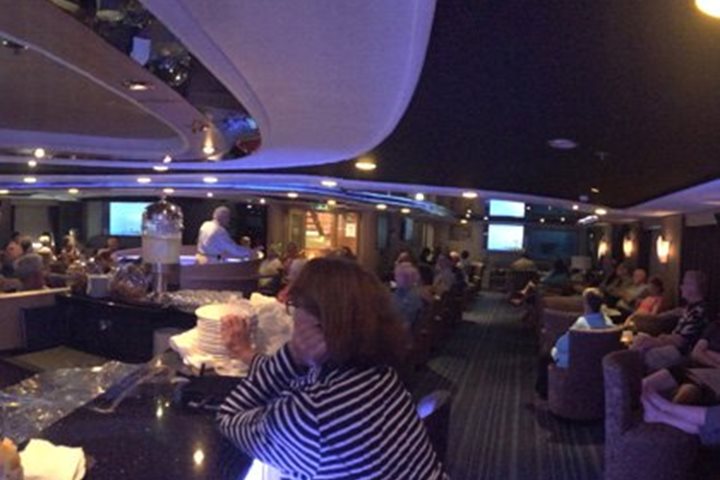October 31st, take two! Having crossed the International Dateline, National Geographic Orion spent our second Saturday of the week at the very small, and very remote, island country of Niue. At roughly 100 square miles, Niue is the largest raised coral atoll in the world, with a population of less than 1,500. The steep limestone cliffs rise sharply from the sea offering us some terrific caves, chasms, and vistas to explore during our island tours.
Landing on the jetty at the capitol of Alofi we began our morning outings. Heading south we visited Avatele Beach where small, wooden outrigger fishing canoes were hauled up on the beach. We had a nice, impromptu visit with a family there, the father having just caught a beautiful yellowfin tuna to be used for an upcoming event marking the first cutting of a young boy’s hair. They told us that in their traditional culture, a boy’s hair was left long to hide them as girls and protect them from harm by evil spirits. They were now preparing for a large gathering of 150-300 family and friends for this important coming of age ceremony.
As we drove along the west coast of Niue we saw the caves traditionally used as family burial sites, as well as the more recent gravestones of family members buried along the roadside. Our guide proudly pointed out a hydroponic garden that supplies the island with fresh vegetables, a honey bee farm (Niue bees are prized as one of the last remaining disease-free populations), a small vanilla plantation, a solar farm that helps provide 70% of the island’s power, as well as the Niue Lawn Bowling Club, and adjacent golf course and prison (occupancy: zero). North of Alofi, many of us had a chance to explore the Avaiki dripstone cave, a site that oral tradition says was where the first Polynesian settlers landed. Photographers spent more time at the scenic sites, while hikers explored the Togo Chasm on the eastern side of the island.
We returned to the ship in time for lunch, and promptly repositioned a bit further south for a full afternoon of snorkeling and diving. The snorkel platform was set up off Avatele Beach in an area known as either “Sea Snake Gully” or “Coral Gardens.” Depending on one’s interests or apprehensions, both descriptions apply. It was a lovely reef with a great variety of fish, but in this spot, sea kraits are found with particular ease and in unusually high numbers. While sea kraits are venomous sea snakes, they seem to be curious of us, but quickly frightened away. Kraits feed on small fish and organisms on the sea floor, but rise to the surface to breathe. They were rising and dropping through the water all around us. This made for an incredibly unusual and exciting snorkeling experience.
Tonight we sailed on toward Beveridge Reef, continuing our journey eastward.









